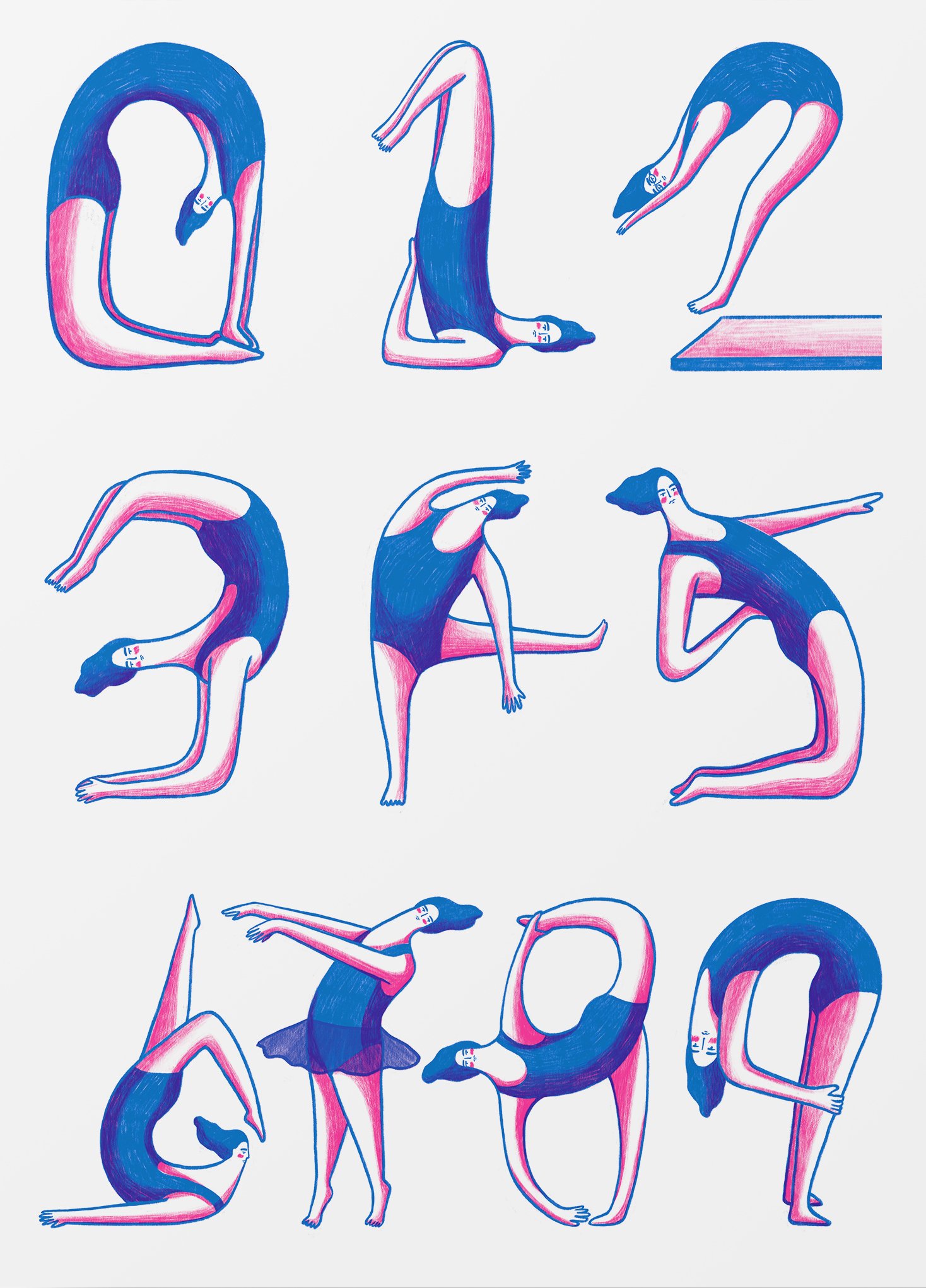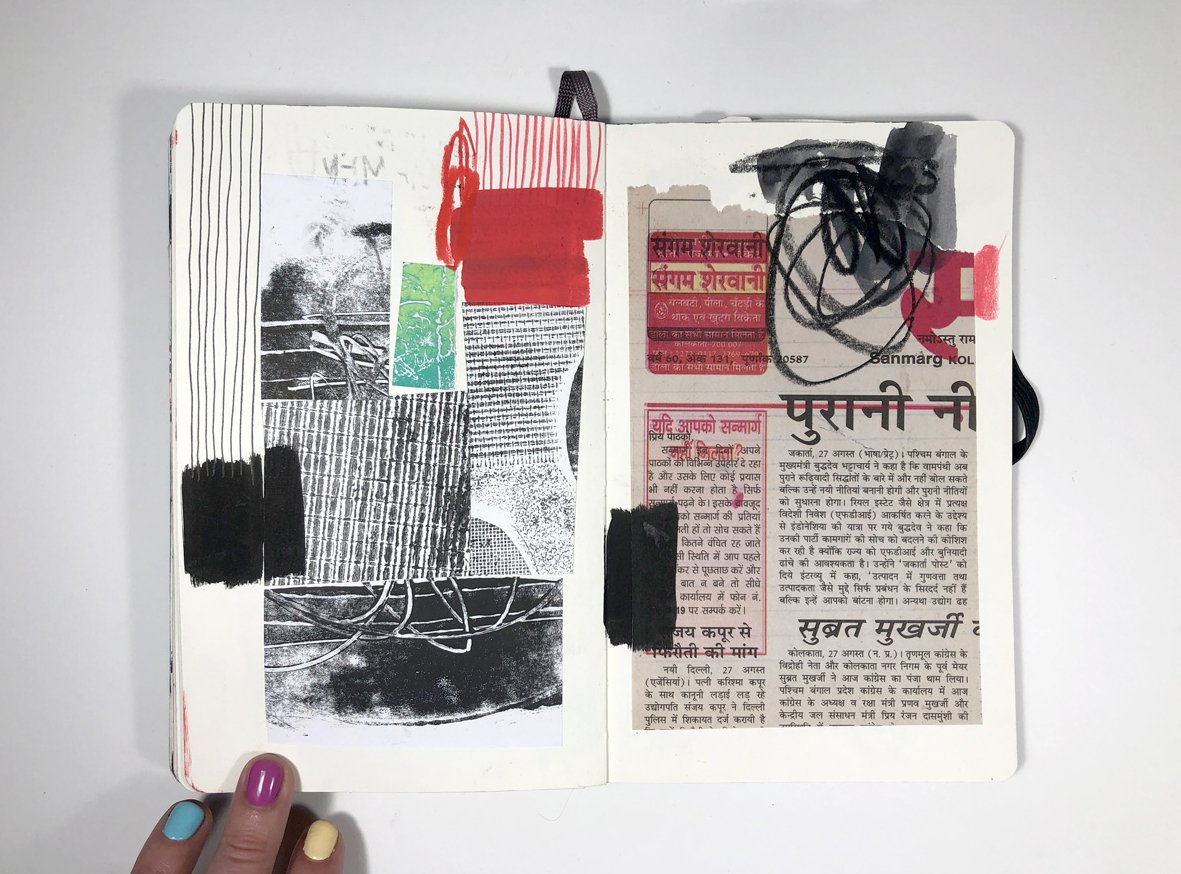IN PRINT
REBECCA SUNNU & TRIBAMBUKA
Rebecca Sunnu started her creative career in fashion. After graduating in fashion design from the New School for Design in New York, she worked in the industry for a decade before pivoting into illustration. After a challenging period of unexpected personal difficulties, it was through painting and drawing that Rebecca found solace. “It was the only time I could focus solely on myself,” she explained, “when I had trouble expressing my feelings, I put it on paper using colours that speak for me.” Now, she creates work in the hope of inspiring others, helping them find connection and joy within their lives.
Posing numbers | BUY THIS FROM OUR ONLINE SHOP
Dance with You | BUY THIS FROM OUR ONLINE SHOP
Rebecca’s elegant, playful illustrations use distinct figurative proportions. Her character’s boxy silhouettes lend her work an endearing quality as the prance around the page in long strides and sometimes contorted positions. “I always felt pressure to draw figures in anatomically correct proportions,” she told Cluster, “now, I focus more on depicting their movement, emotions and dynamics.” The bodies of her characters are often defined by a single block colour, which changes as their parts overlap with others. This technique is particular to printmaking, a medium to which she finds herself increasingly drawn to. “I’ve always been fascinated by traditional printmaking methods. I’m interested in working with layers and combining analog and digital technologies.”
Her process typically involves a large research component which includes watching films, reading, browsing the internet, observing people, her surroundings and making notes of her thoughts. On her hard drive, she keeps a collection of reference images accumulated through years of travel, exhibitions and daily life. “I experiment a lot with different techniques,” she added, “the topic of the project, as well as my research, informs the materials and colours I choose.” Having recently moved to the UK, Cluster has been a way to find belonging in a new place, “as a freelance artist, I find it’s very important to be part of a community where artists can support and inspire each other.” Right now, Rebecca is working on an art book made up of a series of screen printed illustrations, as well as a children's book, and an additional project about mental health.
I am Home | BUY THIS FROM OUR ONLINE SHOP
Despite drawing all her life, it would be years before Anastasia Beltyukova, aka Tribambuka took up illustration professionally. The social norms of her hometown, St. Petersburg, persuaded her to take a different path as a graphic designer. “Despite USSR being one of the first countries to proclaim equal rights for women, it stayed sexist in many ways,” she told Cluster, “as a young girl I always heard that a woman cannot be an artist, that’s a man's job.” When she finally allowed herself to pursue her dream, however, she was well equipped, “I studied in St. Petersburg State Academy of Art and Design, and all that design experience definitely helped to understand the context of commercial illustration.”
Outgrowing Home | BUY THIS FROM OUR ONLINE SHOP
Likewise, Anastasia’s figures - both human and animal - do not adhere to the rigid rules of anatomy; their bodies bend in all sorts of unlikely ways, creating angles and intersections reminiscent of early Modernist art movements like Cubism, Expressionism and Fauvism. “We are all a sum of our influences,” she explains, “my style is influenced by my heritage, Russian avant-garde painters, music, and illustrators like Heinz Edelmann and Milton Glaser.” Her work vibrates with an edge of abstraction, which is augmented by her use of printing and its overlapping of colours. “Printing speaks to my love of mid-century aesthetics, to the idea of limiting your tools and having strict rules - three colours as opposed to millions - as well as the randomness of analogue output as opposed to fully-controlled digital methods.”
Inside
For Anastasia, process differs for analogue and digital work, the prior being more spontaneous, while the later is worked through in more considered, methodical ways. What unites them both is their genesis; the sketchbook. “I always have it with me,” she shared, “I use it to explore, think, play, sketch, write, fool around - I get tons of material this way, it’s like a fridge full of ideas for future works.” Since working with Cluster, Anastasia has formed valuable friendships built on shared values of creativity, “it’s a growing network offering lots of opportunities - exhibitions, sales, connections, legal advice, pricing, negotiations - and it’s a fun crowd to hang out with!”
Noah
Zappi
Currently, Anastasia is preparing new work for a Cluster Exhibition later in 2022, as well as a print-based series about islands and utopias for the Migration Museum in London. And that’s not all; as well as completing some commercial illustration projects, she will also be participating in a group show this March at Oakland Gallery, Brighton.
Rebecca and Anastasia, despite their differing styles, demonstrate that freedom can often be located within limitations. Each artist uses the restrictions of print to their advantage, focusing form and layering to create dynamic work rich with movement.
Work by both Rebecca Sunnu and Tribambuka can be viewed on the Cluster Illustration platform
and purchased through our Cluster Illustration Online Shop.
Thank you for reading,
Stephanie Gavan & Cluster Team.








